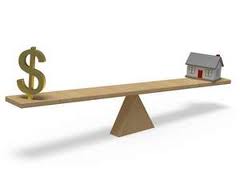 Underwater Mortgages Drop by 850,000
Underwater Mortgages Drop by 850,000
Minneapolis, MN: Millions of homes went underwater at the beginning of the real estate and mortgage crash. Underwater homes, where the owners own more on the mortgage loan than the home is currently worth, have been a thorny issue, preventing many people from refinancing to today’s low mortgage rates, or from selling their homes. If has also cause many people to throw in the towel and simply walk away from their home.
CoreLogic, a real estate data firm has reported that an estimated 850,000 homes are no longer underwater in the first quarter of 2013 due to rising home values. They also reported that another 11.2 million homeowners are now in a “low equity” position, which means they are no longer underwater, but have only a little equity.
This means an estimated 9.7 million homes, about 1 in 5 are still underwater.
Another 11.2 million homeowners were in a low-equity situation, not underwater on their mortgage but with less than 20 percent equity in their homes, a situation that can make refinancing difficult or more expensive.
Rising values
The combination of low mortgage rates, and less foreclosures on the market has help boost values and increased sale prices the past year. In the metro Twin Cities area of Minneapolis / St Paul, average home values have risen 15.1% in the past year alone.
Real Estate is local
Just a few states account for the almost 1/3rd of underwater homes. Florida, Michigan, Arizona, and Georgia. Many people in the Twin Cities are now able to sell and move up to a bigger home, or to easily take advantage of low mortgage rates again, especially with programs like HARP, the Home Affordable Refinance Program, which was specifically designed to assist underwater homeowners who got their current mortgage loan prior to June 1, 2009.

 The first question is pretty silly… Of course it was. The second question is tougher to answer until the completed appraisal physically shows up on the lenders desk.
The first question is pretty silly… Of course it was. The second question is tougher to answer until the completed appraisal physically shows up on the lenders desk.
 St Paul, MN: Many homeowners are curious about the appraised value of their home in today’s market. An actual appraisal is expensive, and county tax records do NOT always reflect true market value. As you may be aware, home values are constantly fluctuating, and with the decline in average values, it is important to have an accurate idea of what your home is worth.
St Paul, MN: Many homeowners are curious about the appraised value of their home in today’s market. An actual appraisal is expensive, and county tax records do NOT always reflect true market value. As you may be aware, home values are constantly fluctuating, and with the decline in average values, it is important to have an accurate idea of what your home is worth.